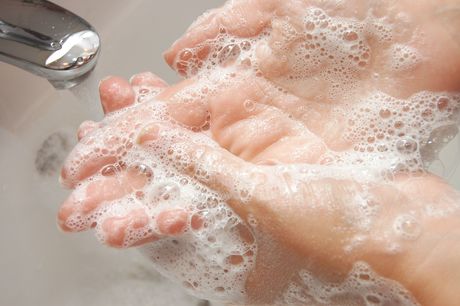Is your hand cleaning protocol as good as it gets?

Ensuring hands are clean is not as straightforward as you may think. The World Health Organization (WHO) recommends a six-step hand-hygiene technique while a three-step procedure is preferred by the US Centers for Disease Control and Prevention (CDC). Is one protocol better? If so, which one?
The answer has been published in Infection Control & Hospital Epidemiology, the journal of the Society for Healthcare Epidemiology of America.
Jacqui Reilly, professor of infection prevention and control at Glasgow Caledonian University in Scotland, led a study which compared WHO’s six-step hand hygiene process with CDC’s three-step system.
And the result was clear: the six-step hand-hygiene technique recommended by the WHO is superior to the CDC’s three-step method in reducing bacteria on healthcare workers’ hands.
During the randomised controlled trial in an urban, acute-care teaching hospital, researchers observed 42 physicians and 78 nurses completing handwashing using an alcohol-based hand rub after delivering patient care. The six-step technique was determined to be microbiologically more effective for reducing the median bacterial count (3.28 to 2.58) compared to the three-step method (3.08 to 2.88). However, using the six-step method required 25% more time to complete (42.50 seconds vs 35 seconds).
“Hand hygiene is regarded as the most important intervention to reduce healthcare-associated infections, but there is limited evidence on which technique is most effective,” said Reilly, PhD, lead author of the study. “This study provides a foundation for effective best practices to implement on the frontlines of healthcare.”
“One of the interesting incidental findings was that compliance with the six-step technique was lacking. Only 65% of providers completed the entire hand hygiene process despite participants having instructions on the technique in front of them and having their technique observed. This warrants further investigation for this particular technique and how compliance rates can be improved,” said Reilly.
The researchers recommend authors of international guidance should consider this evidence when making official recommendations on best practices in hand hygiene.
Now, the healthcare environment may sound a long way from food preparation facilities, but in both situations hand hygiene is critical. Perhaps it’s time review the ‘quick dunk and cursory wipe on a dodgy towel’ protocol that is being followed in your facility.
Originally published here.
Six beverage trends predicted for 2026
Demand for customisation, 'protein-ification' and sustainable storytelling are some of...
Making UHT processing less intensive on energy
A nutritional beverages company was seeking a more sustainable way to produce UHT beverages using...
Tasty twist for chocolate alternatives
Food scientists develop two novel flavour-boosting techniques to transform carob pulp into a...








